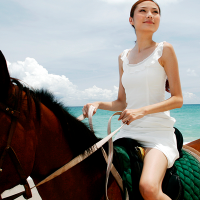Horse Racing Tips for the Beginner Sportsman
For many of us (in fact half the adult population) having a bet on the Grand National is about the extent of betting on horseracing but what about if you fancy taking a jump into this jargon fueled minefield? There is no question that being a beginner in horseracing betting is very daunting indeed as there are so many imponderables: the going, the draw, the handicap and, of course, the trip.
As with most jargon the reality is far less complicated than most would have you believe and for some reason the seasoned pro often sneers at the beginner which does little to encourage the novice. So let’s explain some of these important factors.
The Going: this refers to the state of the ground that the horse will actually run on and is arguable the most important single factor. Picture yourself running on sand, tarmac and grass – you will clock a very different time over the same distance on each type of ground this is the same for horses.
Equally, if you challenged a friend of similar fitness you are likely to find that you are better on, say grass, and your friend is quicker on the sand. This is very true of horses, some love “some cut in the ground” – softer ground – and others love to “hear their hooves rattle” – firm ground. It really is as simple as that, you then have to found out which horses prefer which ground and make sure they are on their favoured surface before placing your bet.
The Draw: if you picture the starting stalls of a horse race, the draw is simply which stall they will come out of – this is NOT necessarily the same as their number on their side underneath their saddle.
But what’s the big deal? On some racecourses whether you are drawn high or low can make an enormous difference to your stead’s chance. For example, Chester racecourse is very “tight track” meaning the bends are very sharp – it is in fact like a circle – and therefore as you can guess it is generally favourable to be on the inside rather tan taking the long way round. Obvioulsy, the longer the distance of the race the less this factor will matter which brings us neatly on to “the trip”.
The Trip: this is simply the actual distance of the race – in horseracing, like in athletics, there are many different distances for races and, like in athletics those better at long distances are rarely as good at sprinting. For example, the Grand National is 4 miles and a half miles and the shortest distance is just five furlongs.
Ah, “furlongs”, what is a furlong? A furlong is exactly 1/8th of a mile, so four furlongs is half a mile. Why do they still use furlongs in horse racing? Who knows!
The Handicap: a lot of horse races are handicaps and this is, for once, exactly as you would expect it to be. The best horse in the race will be given more weight to carry than the worst. The theory being that this will level up the chances of every horse but inevitably because of all the other factors discussed above this rarely happens. Nobody said horse race betting was easy but at east hope fully you are now armed with some basics to kick off with. Good luck!



